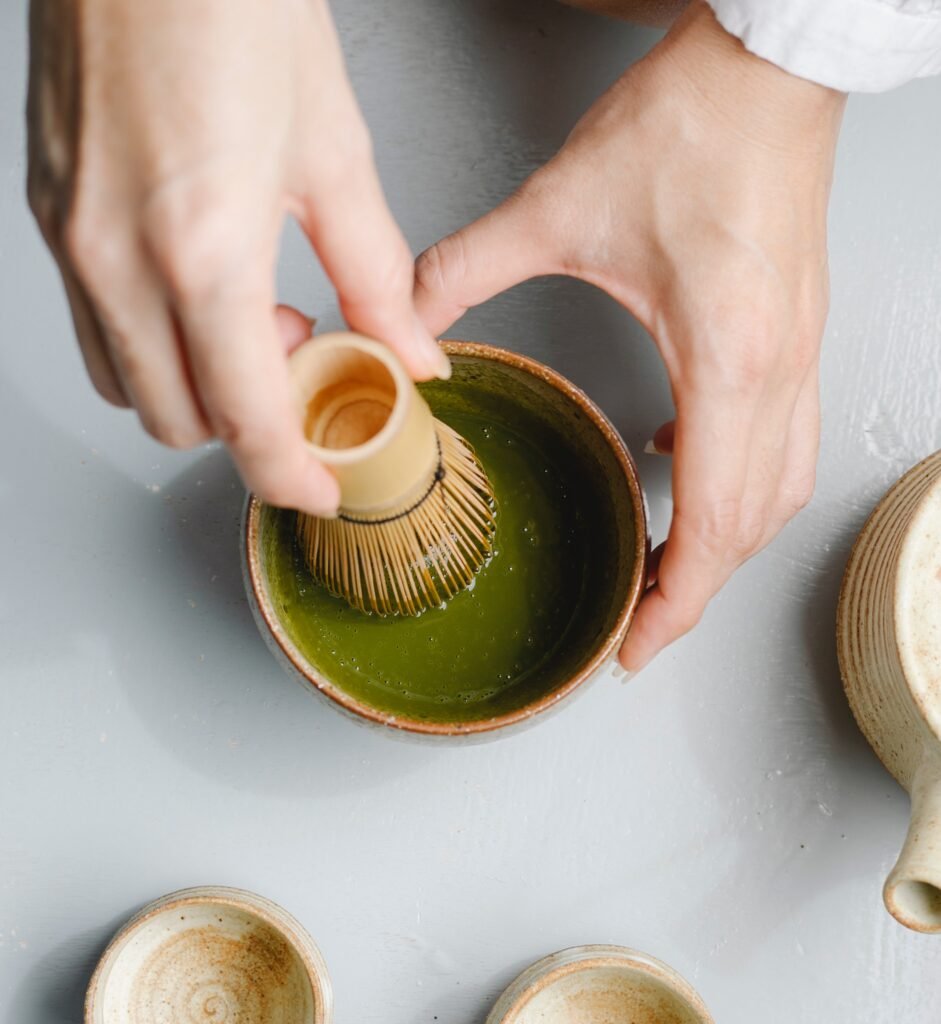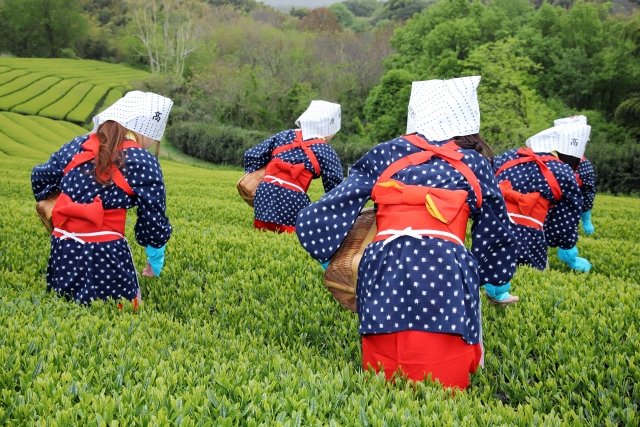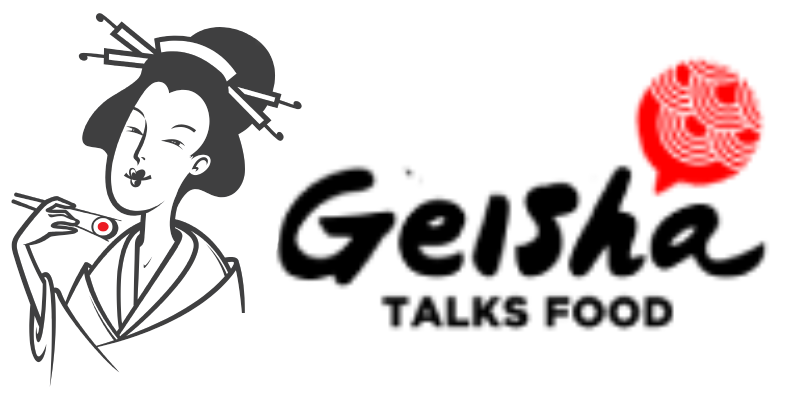What is Matcha (& green tea)?
Is the Matcha latte you get in your neighborhood cafe actually made of real Matcha? Many think it is, and are wrong! That’s why I decided to write this post. In this post, you will learn all about Matcha from an authentic Japanese point of view. It also comes with exclusive fun and practical Geisha Tips!, so going forward, you can enjoy Matcha like a local.
Matcha = Green Tea?
It goes without saying that Matcha latte is served in almost every city from Buenos Aires to Budapest. Shops are getting creative these days and they are serving anything from Matcha croissant, Matcha tiramisu, and even Matcha beer & coca cola (yikes!). I personally wouldn’t try the last two, as they don’t sound too appetizing.
Here is a quiz: which one of the two below is Matcha?

The answer is the right one in vibrant green, and the other one is Sencha. Both are green tea, but the way it is made is very different, resulting in completely different palates, looks, and flavors. Sencha is roughly 60% of green tea out there, and Matcha is only 3%. Let’s dive into the differences between the two. Sencha is what you normally think of when you say green tea. You brew the brownish tea leaves in a pot or a tea bag, and drink just the transparent green liquid, just as you drink black tea. Imagine what you get in a Japanese restaurant. It is the leaves of Camellia Sineisis, a tea plant. Black tea is made from this tea plant too but they are fermented. Matcha is also from the same plant and not fermented like Sencha. So how are they different?

Difference #1: As crazy as it may sound, to make Matcha, tea farmers cover the tea plants with a mat (traditionally bamboo) two to six weeks before harvesting to make matcha. This is designed to limit the direct sun exposure, and this is where the matcha miracle begins. The balance of enzyme, caffeine, flavanol, changes. On top of that chlorophyll is stimulated to create that vivid green color, which enhances antioxidants and umami. No wonder matcha is addictive. It is full of this Umami. If you would like to get fun and practical Geisha Tips on how to incorporate Umami into your life, check out here.
Difference #2: For Sencha, you include stems and veins in addition to the tea leaves. But for Matcha, you use the leaves only. Do you know why? There is a clear reason for this. For Matcha, you mix the powder into water to drink, so you’re actually eating leaves themselves. Stems are bitter when you eat them! Funny enough, when they are brewed, stems and veins could add a nice flavor. There’s even Sencha made exclusively of stems called Kukicha. I’ll talk more about that later.
Let’s also talk about what is considered “good” Matcha along with what makes “ceremonial grade” and “culinary grade”. First we have to understand how Matcha is traditionally graded. It is graded by three factors: color, texture, and quality, which depends on an interplay of masterful shading/processing technique, and climate as well as quality of the tea plant. High-grade Matcha is characterized by vibrant green color, creamy & fine texture, and comes with a hint of sweetness without overly being bitter. Usually, a few young leaves at the top of the tea bush and harvested in April to early May after a long winter hiatus result in high-grade tea. You probably would be surprised to hear that this is a separate classification from “ceremonial grade” and “culinary grade”, which is a label for suitability of Matcha for a certain purpose.
Ceremonial grade means it is suitable for “tea ceremony”, which is traditionally the only way Matcha was consumed back in the day, so all the aforementioned come into play. However, “culinary grade” does not mean it is “low-grade” Matcha. It means it is suitable to create Matcha flavor in other food items than a bowl of Matcha (a small hot water with Matcha powder) like ice cream, cake, and even Matcha latte. It has that raw green taste with bitterness, which stands out even when it’s baked into a cake dough typically characterized by its distinct butter taste. My honest take on this. For cakes, I am ok with going culinary grade all the way. For Matcha latte, I still think ceremonial grade is better because the milk taste doesn’t really offset the aroma of Matcha, especially when it is the right soy milk. That being said, it is true that ceremonial grade costs more than twice as much as culinary grade. My recommendation is to do 50/50 culinary-ceremonial grade, use ample powder (1.5X to 2x the amount used in a typical café), mix it into a small amount of hot water to whish, then slowly pour steamed (barista-kind) soy milk from the side. You will immediately feel the difference.
Now that you know all about Matcha, let me give you useful Geisha tips. Because for Matcha you directly eat tea leaves in a liquid form, you get all the nutrients and benefits from it. I definitely recommend you pay extra bucks to get Matcha instead of Sencha, if you’re looking for health benefits. I know there are so many health benefits, so I am preparing a page to provide a list and go over its credibility. Once it is ready, you can check it out here.
Another tip is to pay attention to the caffeine content. Matcha has caffeine of 60mg per cup, which is double that of Sencha. It is still less than Black tea, which can contain as much caffeine as coffee. I am sensitive to caffeine myself, so at night I only drink a special sencha made only from tea stems called Kukicha. This one has almost no caffeine, and is a perfect choice for that evening fix.
Hope that was helpful. I try to make content that goes deeper than the surface and makes your Japanese food experience more and more enjoyable. I will cover every single dish and cuisine in Japan! So make sure to subscribe and join the community.
